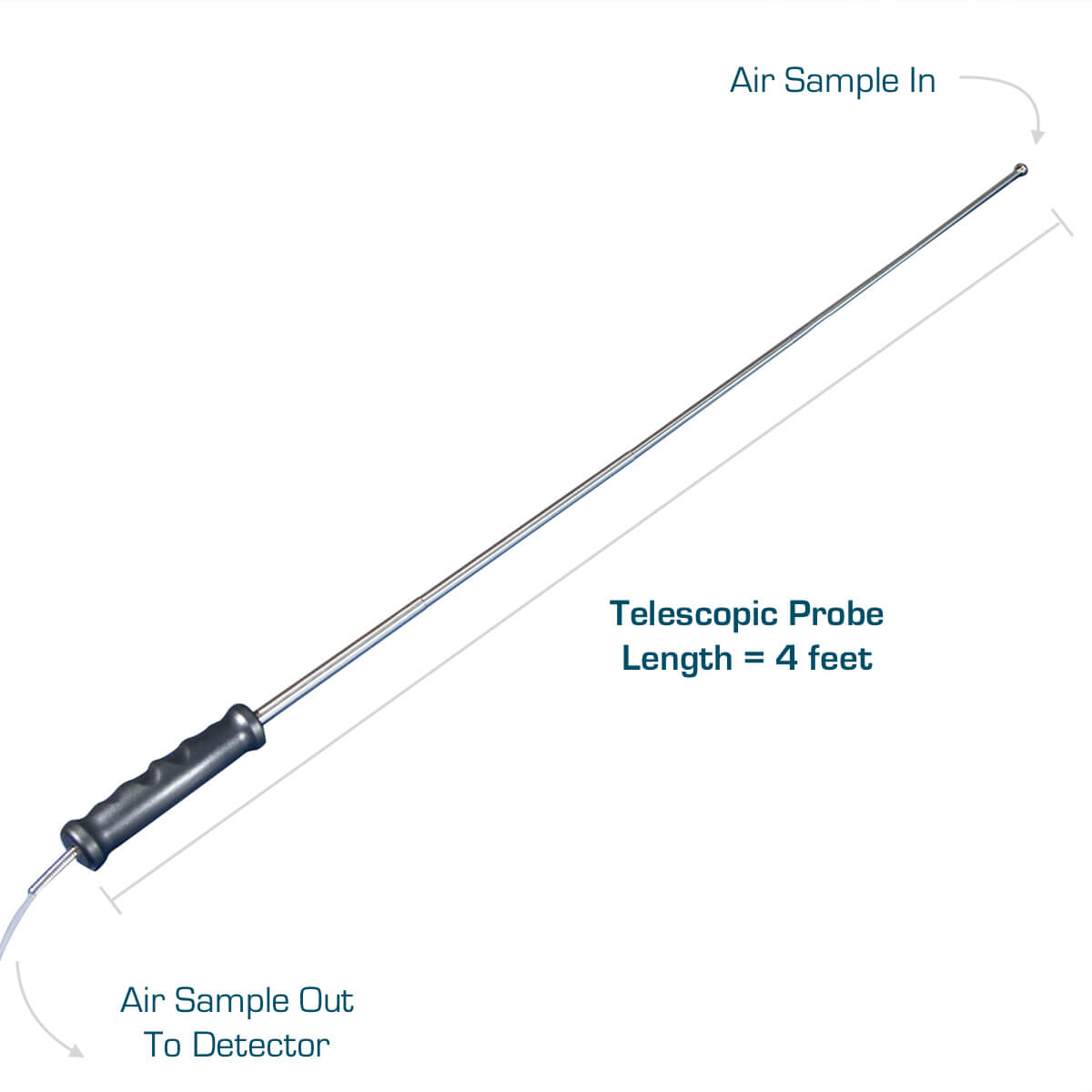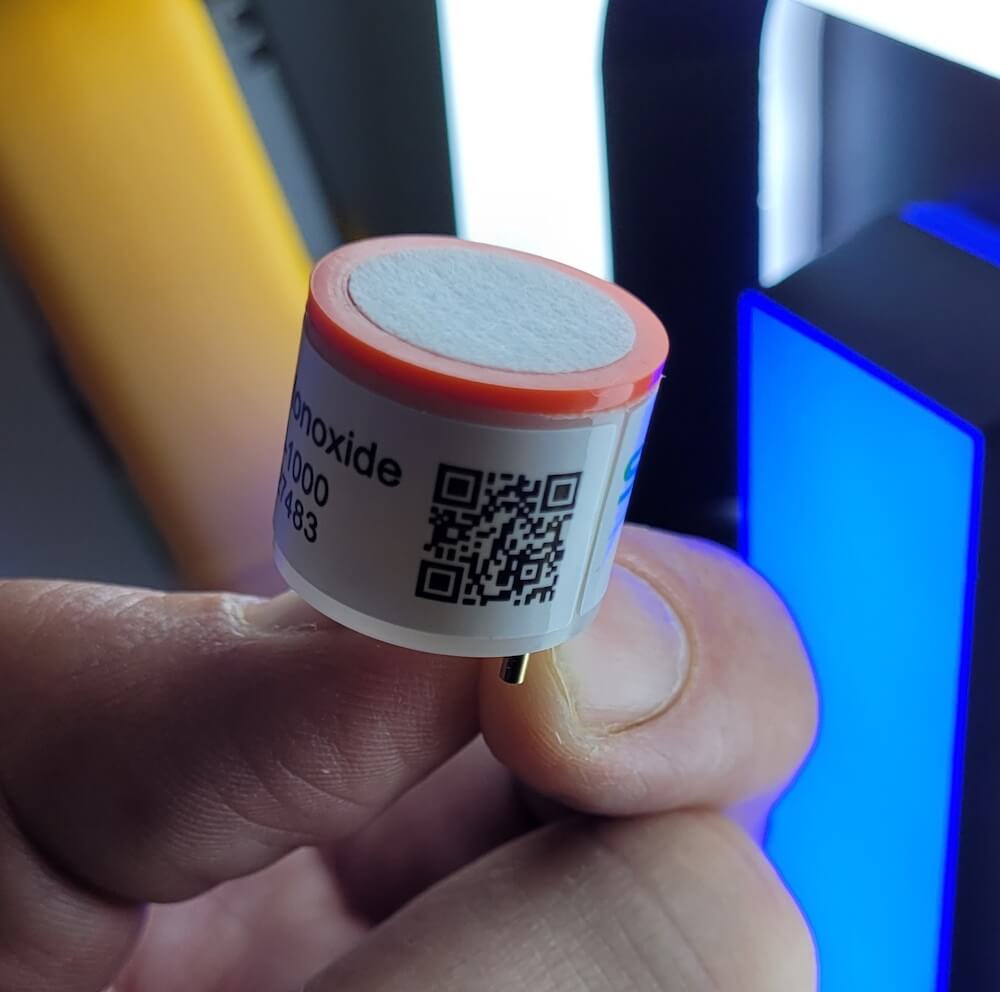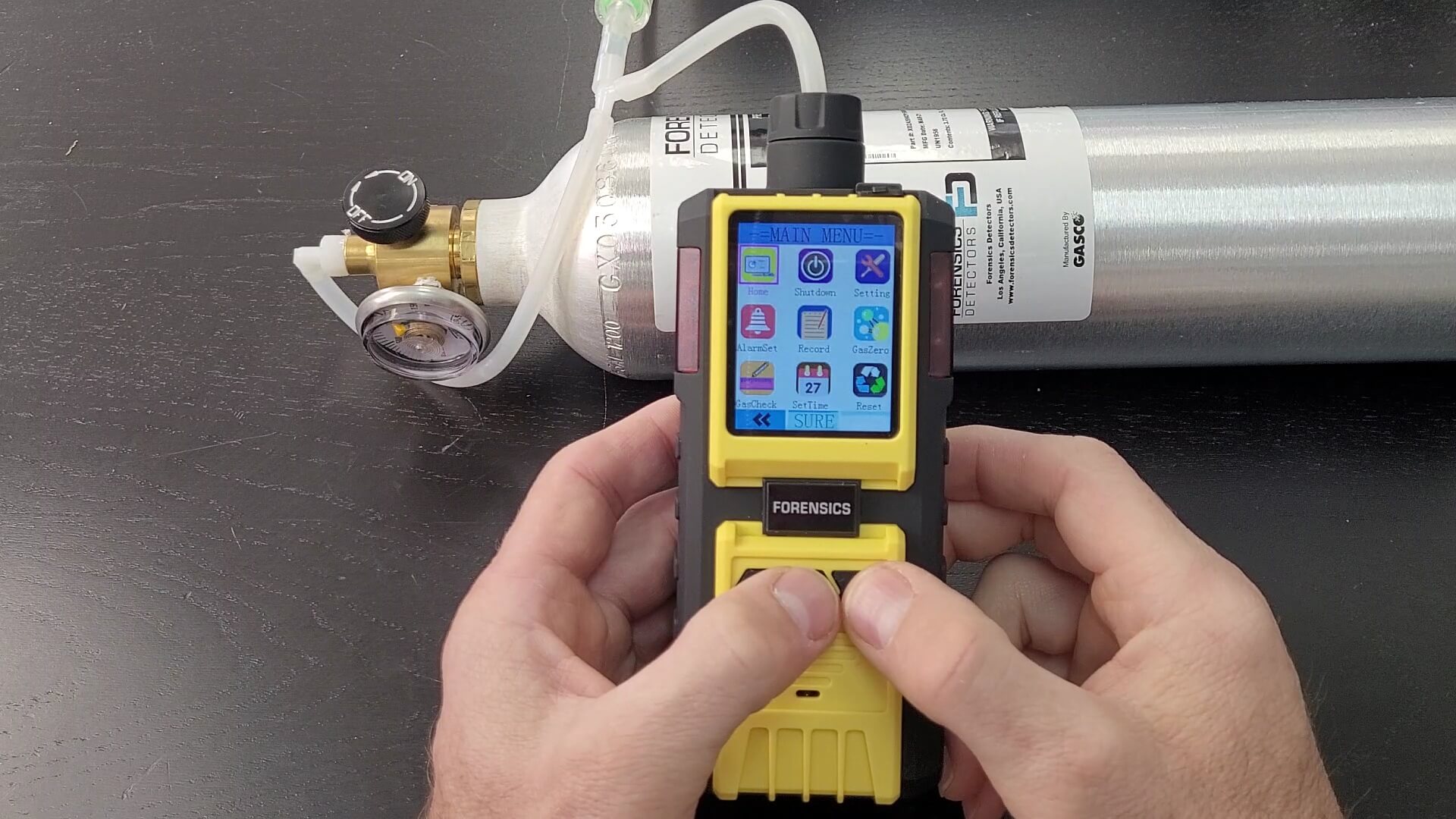A carbon monoxide leak detector is a safety device that identifies the presence of carbon monoxide (CO), a deadly, odorless gas. It uses electrochemical or other sensor technologies to measure CO concentrations in the air, providing early warning through alarms and digital readings when levels become dangerous. These detectors are essential in CO leak detection and checking for CO in the indoor air.
Pros |
Cons |
|
✅ Detection Range: Accurate CO measurement from low to dangerous levels. ✅ Alert System: Multiple alarm types for different CO concentration levels. ✅ Applications: Air quality assessment, spot checking, leak, back drafting and personal exposure.
|
⛔ False Alarms: CO sensors are sensitive to hydrogen gas. ⛔ Limited Lifespan: Sensors typically need replacement after 2-3 years. ⛔ Placement Critical: Must be stored at room temperature with annual calibration. |
What Is The Best Carbon Monoxide Leak Detector?
There are many CO leak detectors available. Ensure the unit has a built-in pump and probe so you can spot-check when looking for a CO leak. Also, make sure the unit is NIST calibrated for maximum accuracy.
- Forensics Detectors' Carbon Monoxide Analyzer for Inspectors
- Bacharach CO Analyzer
- Sensorcon with Probe
- Testo Carbon Monoxide Analyzer
- UEI Carbon Monoxide Analyzer
How Can a Carbon Monoxide Leak Occur?
Carbon monoxide gas can leak into indoor spaces through various sources and mechanisms. Here are some common ways carbon monoxide can enter an indoor environment:
- Appliances & combustion: CO gas may leak if a fossil fuel-burning appliance is faulty. Such as a damaged heating system with a cracked heat exchanger. These are unintended escape and leak paths exhaust gas traverses that may enter the occupied indoor area and create a serious CO gas hazard.
- Blocked or damaged vents: Vents and chimneys are designed to safely carry exhaust and carbon monoxide out of a building. If these ventilation systems become blocked by debris, snow, bird nests, or other obstructions, or if they are damaged or improperly installed, carbon monoxide can accumulate and leak back into the living space.
- Vehicle exhaust: If a vehicle is left running in an attached garage or if exhaust fumes from nearby roads or parking areas enter a building through open windows or inadequate ventilation, carbon monoxide can infiltrate the indoor environment.
- Backdrafting: Backdrafting occurs when there is negative pressure inside a building, causing outside air to be drawn in through vents or flues instead of being expelled. This reversal of airflow can result in exhaust carbon monoxide from appliances coming back into the living area.
- CO Leaks from Neighbors: In apartments and condos, it is common that a central pool heater, furnace, or boiler can contaminate adjoining spaces. In addition, adjacent vehicle parking garages may also contaminate and leak carbon monoxide into the indoor spaces.
- CO Leaks from Remodelling: I have also seen small engines such as mixers, grinders, and other small engines used in building and also triggering carbon monoxide leakage and poisoning.
Who Uses a Carbon Monoxide Leak Detector?
- Inspectors: Professionals conducting inspections use carbon monoxide CO leak detectors and analyzers to assess the air quality of the indoor space. This could be to check to ensure OSHA levels are not being exceeded.
- Industrial and Workplace Safety: Carbon monoxide CO leak detectors are utilized in industrial settings, factories, warehouses, and other workplaces where fuel-burning equipment or vehicles are used to ensure a safe working environment and comply with occupational health and safety regulations.
- Homeowners: Individuals who own or rent homes use carbon monoxide leak detectors to check for leaks to ensure safety.
- Property Managers: Those responsible for managing rental properties, apartment complexes, or commercial buildings often use carbon monoxide leak detectors to check CO levels.
- HVAC Technicians: Heating, ventilation, and air conditioning (HVAC) professionals use carbon monoxide leak detectors during routine maintenance or repairs of heating systems to check for potential leaks or faulty combustion.
How to Test for a Carbon Monoxide Gas Leak?
To test for a carbon monoxide gas leak, take the following steps:
- Use a CO Leak Detector: Acquire a carbon monoxide leak detector and use it at suspected leakage locations. These locations may be around appliances, HVAC registers, vents, flue connections, and indoor locations.
- Monitor the Carbon Monoxide ppm Readings: Allow the carbon monoxide leak detector sufficient time to sample the air and provide accurate readings. Monitor the detector's display or indicators for any changes in carbon monoxide levels.
- Leak fixing: If a leak has been found. Take note of its location and tag the location. Address the leakage with an appropriate engineer or technician.
What Does A CO Gas Leak Smell Like?
Carbon monoxide (CO) gas is odorless, lacking any distinct smell. This makes it highly dangerous, as it cannot be detected by our sense of smell. Unlike gases such as natural gas, which have added odorants for detection, carbon monoxide has no specific scent. Relying on your sense of smell to detect a CO gas leak is unreliable.
How to Test for a CO Gas Leak?
If you suspect you have a carbon monoxide gas leak, you should use a carbon monoxide gas leak detector to inspect.
- Begin by turning on the Carbon Monoxide Leak Detector and allowing it to start operating after the countdown.
- Next, perform a quick bump test to ensure the analyzer is functional. You can do this by using CO bump gas. The point here is to confirm the Carbon Monoxide Leak Detector is indeed operating.
- Once you have completed the bump test, take the Carbon Monoxide Leak Detector and scan the area of interest. Be patient and thorough to ensure you capture any CO gas.
- Observe the detector's response. The units have a digital readout in PPM so it is very sensitive.
- If you have confirmed a Carbon Monoxide gas leak, ensure you take appropriate action to maximize safety.

How Long Does the Carbon Monoxide Sensor Last?
The lifespan of a carbon monoxide electrochemical sensor is about 3 years. Some last up to 10 years. The sensor's lifespan is influenced by factors such as operating temperature, humidity, exposure to contaminants, and the frequency of calibration and maintenance.

How Often Should I Test or Calibrate my Carbon Monoxide Leak Detector?
How Does a CO Leak Detector Work?
Carbon monoxide analyzers monitor the presence of carbon monoxide gas in the air using electrochemical sensors, which are cost-effective and commonly used in units priced below $500. When exposed to carbon monoxide, these sensors produce a voltage output that increases linearly with the concentration of carbon monoxide. This allows the analyzer to display a quantitative representation of carbon monoxide levels in parts per million (ppm). The relationship between the voltage output and the CO ppm reading is established through calibration, where a known concentration of CO gas is used to determine the corresponding output voltage of the sensor. This calibration process ensures accurate and reliable measurements from the analyzer.

How Should I Store my Carbon Monoxide Leak Detector?
To ensure maximum sensor life and accurate measurements upon operation, it is recommended to store the Carbon Monoxide Leak Detector in a moderate environment with a humidity level of 50%RH and a room temperature of approximately 70F.
What is the Difference Between a CO2 and CO Leak Detectors?
CO and CO2 are two different gases. People get confused which is unfortunate and can be very dangerous. In fact, many of our customers purchase CO2 leak detectors when they were actually seeking CO detector.
In other words, CO detectors focus on detecting the toxic gas carbon monoxide, while CO2 detectors monitor carbon dioxide levels as an indicator of indoor air quality and ventilation. Both types of detectors serve important safety and health purposes, but they are designed for different gases and concerns.
Can Humans Smell Carbon Monoxide Gas?
No, carbon monoxide is completely odorless to humans. This makes it particularly dangerous, as we cannot detect its presence without specialized CO detection equipment.
Conclusion
- A carbon monoxide leak detector is a device designed to find carbon monoxide leaks used by inspectors in homes, industries, and occupational spaces.
- Carbon monoxide is the most dangerous gas known to man and many are injured due to carbon monoxide inhalation. Early leak detection of carbon monoxide gas can prevent many deaths and injuries.
- A carbon monoxide leak detector should be used with an appropriate pinpoint probe, built-in pump (to increase detection speed), and display carbon monoxide concentration in ppm.
- Be patient and slow when using a carbon monoxide gas leak detector. Ensure the unit is well maintained and used with patience.
About The Author
Dr. Kos Galatsis ("Dr.Koz") is the President of FORENSICS DETECTORS where the company operates from the scenic Palos Verdes Peninsula in Los Angeles, California. He is a subject matter expert on gas sensor technology, gas detectors, gas meters, and gas analyzers. He has been designing, building, manufacturing, and testing toxic gas detection systems for over 20 years.

Every day is a blessing for Dr. Koz. He loves to help customers solve their unique problems. Dr. Koz also loves spending time with his wife and his three children going to the beach, grilling burgers, and enjoying the outdoors.
Read more about Forensics Detectors here.
Email: drkoz@forensicsdetectors.com
Phone: +1 424-341-3886

